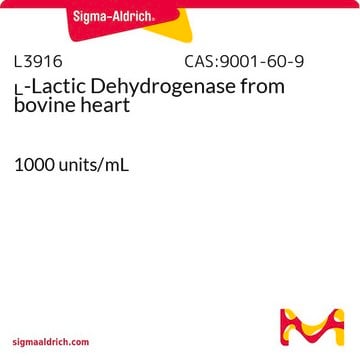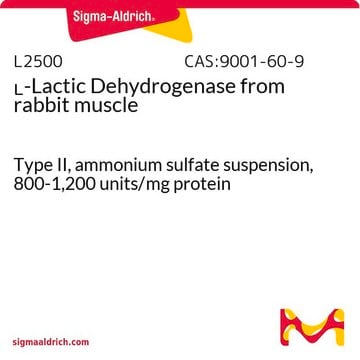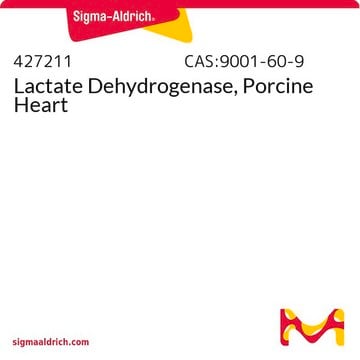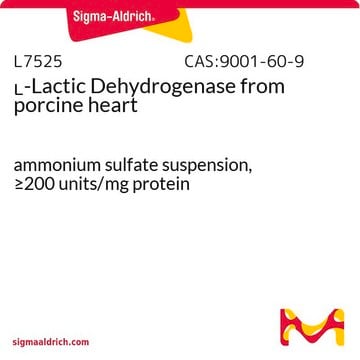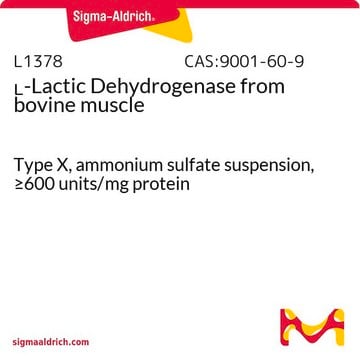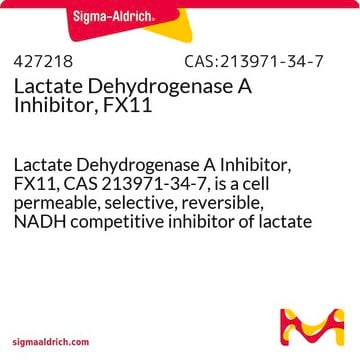SAE0049
L-Lactate Dehydrogenase (LDHA)
from human, recombinant, expressed in E. coli, aqueous solution
Synonym(s):
Lactic Dehydrogenase, recombinant from E. coli, α-HBDH, α-hydroxy butyratede hydrogenase, anaerobic lactate dehydrogenase, (S)-Lactate: NAD+ oxidoreductase, L-Lactate Dehydrogenase, Lactate
About This Item
Recommended Products
biological source
human
Quality Level
recombinant
expressed in E. coli
form
aqueous solution
storage condition
(Keep container tightly closed in a dry and well-ventilated place)
color
colorless
UniProt accession no.
shipped in
dry ice
storage temp.
−20°C
Gene Information
human ... LDHA(3939)
Looking for similar products? Visit Product Comparison Guide
General description
The gene LDHA (L-lactate dehydrogenase A chain) is mapped to human chromosome 11p15. It is a subunit of lactate dehydrogenase.In particular, lactic dehydrogenase A (LDHA) is mainly found in skeletal muscle, and for that reason is known as the M subunit. This recombinant form of LDHA has a C-terminal histidine-tag.
Application
Biochem/physiol Actions
Unit Definition
Physical form
Storage Class
10 - Combustible liquids
wgk_germany
WGK 1
flash_point_f
Not applicable
flash_point_c
Not applicable
Certificates of Analysis (COA)
Search for Certificates of Analysis (COA) by entering the products Lot/Batch Number. Lot and Batch Numbers can be found on a product’s label following the words ‘Lot’ or ‘Batch’.
Already Own This Product?
Find documentation for the products that you have recently purchased in the Document Library.
Customers Also Viewed
Our team of scientists has experience in all areas of research including Life Science, Material Science, Chemical Synthesis, Chromatography, Analytical and many others.
Contact Technical Service


